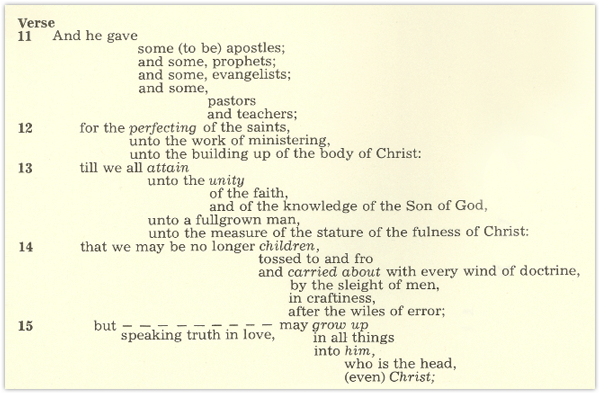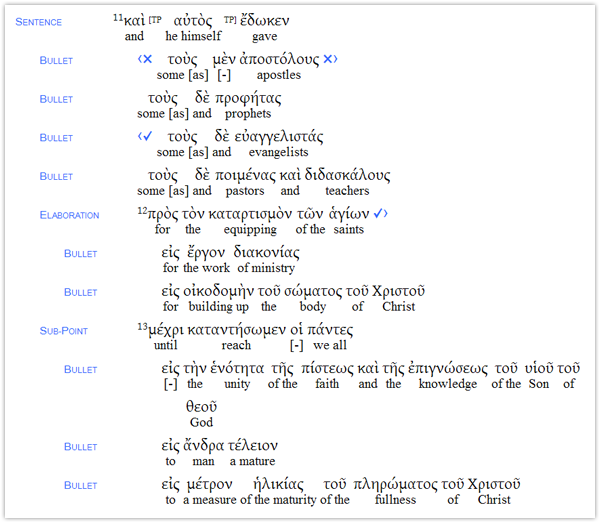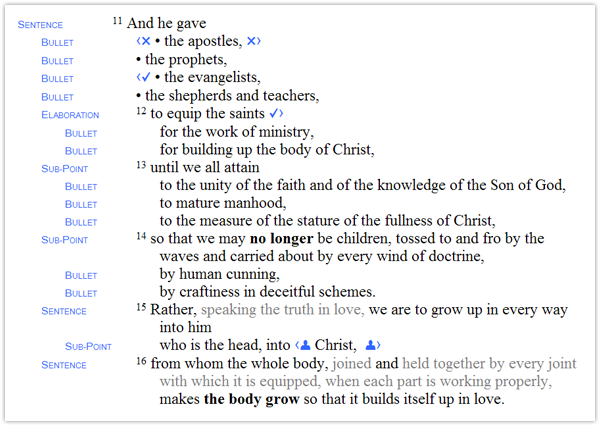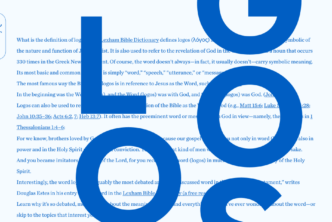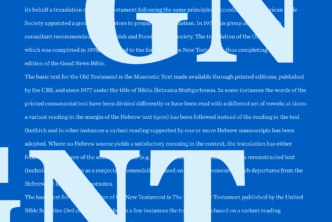Today’s guest post is from Dr. Steve Runge, a scholar-in-residence at Logos Bible Software and author of the Lexham Discourse Greek New Testament and Lexham High Definition New Testament.
I have been reading through one of my seminary textbooks, the first edition of Robinson’s Biblical Preaching. The more I read, the more I was struck by how closely his approach to exegesis matched up with the Lexham Discourse Greek New Testament and the High Definition New Testament. Grammar professors are usually interested in the detail, the specifics of the words. The homiletics profs focus on the ‘big idea’, i.e. how the smaller parts contribute to the whole. The hard part is synthesizing these two elements.
This synthesis is captured in Robinson’s Stage 3 of preparation, after the lexicons, dictionaries and commentaries have been consulted. He states, “As you study the passage, relate the parts to each other to determine the exegetical idea and its development” (p. 66). What is interesting is that while he lists eight different kinds of resources to help you through your study Stage 2, he does not list any for Stage 3. Apparently, you’re on your own.
The core part of Stage 3 is identifying what Robinson calls the Subject and the Complement. The Subject “accurately describes what the author is talking about” (p. 67). Complements “complete the subject and make it into an idea” (p. 67). In other words, any given passage is made up of subjects, to which complements are added. The most important part of identifying these elements, says Robinson, is understanding the structure of the passage. If the structure is understood, then the flow of thought or reasoning can be accurately discerned and communicated. This is accomplished by developing what he calls a ‘mechanical layout’, essentially a block diagram that charts the flow of the text.
Such a layout points up the relationship of the dependent clauses to the independent clauses. . . . Either a diagram or a mechanical layout brings analysis and synthesis together so that the major idea of a passage is separated from its supporting material. (68)
Here is the sample of his mechanical layout from Appendix 2 of the first edition. It is not included in the second edition.
Now let’s shift gears and take a look at what is found in the Lexham Discourse Greek New Testament. It provides the same kind of block outline for the entire New Testament as seen in Robinson’s layout.
The independent clauses can be differentiated from the dependent ones by the labels in the left column, by the indenting, and by the discourse annotations like backgrounding (e.g. Text).
Where the Greek writer uses special devices to highlight that something is part of Robinson’s Subject, the LDGNT annotates this as a frame of reference (e.g. [TP Text TP]). Some frames of reference introduce topics, others introduce information that helps you relate what follows to the preceding text. Either way, they are clearly marked to avoid confusing them with Robinson’s Complement. Greek writers also used special devices to emphasize the most important part of the Complement. This too is indicated for you using bolding.
The LDGNT was intentionally developed for preachers and teachers. It includes many other devices that help you identify where the writers highlight key themes, or highlight significant connections between ideas, and much more. We felt like this information was so important that it had to get into the hands of folks without training in Greek. This resulted in a slightly simplified version called the Lexham High Definition New Testament: ESV Edition.
Check out the videos for the HDNT and LDGNT to learn more about each resource.
Those of you who already have the LDGNT will be excited to hear about a forthcoming resource I’ve been working on: Discourse Grammar of the Greek New Testament: A Practical Introduction to Discourse Features for Teaching and Exegesis. This text introduces the discourse concepts annotated in the LDGNT, starting with how standard Greek grammars like BDF, Robertson, Wallace and Porter treat them. Keep an eye out for it on the Pre-Pub page.

